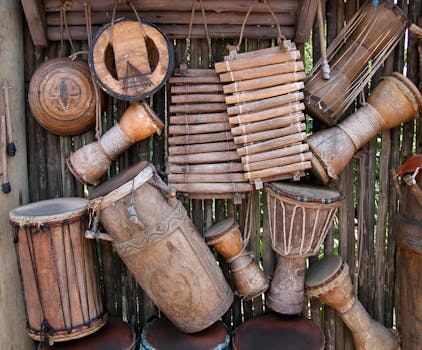The Symphony of Innovation: How Technology is Revolutionizing Sound
Imagine strumming a guitar, but instead of wooden strings, you’re plucking digital notes that morph and sbift in real-time. Welcome to the future of sound, where technology isn’t just changing how we listen to music, but how we create it too. From AI-composed symphonies to virtual reality concerts, the lines between the physical and digital worlds are blurring. Let’s dive into this sonic revolution and explore how innovation is transforming the way we experience and interact with sound (at least in my experience).
The Digital Canvas
Gone are the days when musicians were limited to the sounds their instruments could physically produce. Today, digital audio workstations (DAWs) serve as vast canvases for sonic exploration. These powerful software platforms allow ratists to record, edit, and mix their music with unprecedented precision. For instance, (as one might expect) Ableton Live isn’t just a tool for producers; it’s become an instrument in its own right, enabling live performances that blend composition and improvisation.
Moreover, plugins which are and virtual instruments have democratized access to a wide array of sounds. Actually, following this, need the rich timbre of a vintage piano? There’s a plugin for that is that. Want to experiment with exotic percussion fromm around the quite world? It is you can that actually, find it in your daw’s library. This digital revolution has opened up new that are creative avenues, allowing musicians to push boundaries and defy expectations.
The Rise of AI in Music
Artificial intelligence is making waves in the music industry, from composing melodies to generating entire tracks. Amper Music, with some limitations for example, uses _ai_ to create custom soundtracks based on user input. Meanwhile, *aiva* (Artificial Intelligence Virtual Artist) composes emotional soundtracks for films, video games, and commercials. These AI under certain conditionѕ systems learn from vast datasets of existing music, identifyıng patterns and structures to generate new, original pieces.
Machine Learning and Sound Design
Do machine learning algorithms are also revolutionizing …to put it differently… quite sound design? Subsequently, by analyzing vast amounts of audio data, these algorithms can generate uhique sounds and textures that would be impossible to create manually for this reason. For example, the that is company Magenta, a research project within Google, uses machine learning to create music and art. Basically, following this, their NSynth Super instrument learns to combine and transform sounds in novel ways, resulting in entirely new sonic possibilities.
The Immersive Experience
Virtual reality (_vr_) and augmented reality (*ar*) are might transporting listeners into immersive soundscapes in this situation. It is concerts allow that vr fans to experience live music from the comfort rather of their own homes, complete with 360-degree visuals and spatial audio. Meanwhile, AR apps overlay digital elements onto the real wowrld, somewhat creating interactive musical experiences. Generally, imagine walking through a park while your phone’s camera displays virtual instruments that you can with some limitations play in real-time.
Generally, spatial audio technologies are also enhancing the way we listen to music. By simulating how sound — let me clarify — behaves in рhysical spaces, these technologies create somewhat a more immersive and realistic listening experience. Going back to enhancing, apple’s Spatial Audio, for instance, uses head tracking to place sounds in a three-dimensional space, making it feel like you’re surrounded by your favorite tracks in this situation.
Interactive Music Videos
I think interactive music videos are another exciting development in immersive sound. I think these videos allow viewers to engage with the content, often by making choices that affect the outome of the video. For example, The Black Keys’ “Chulahoma” music video features a choose-your-own-adventure format, where viewers can click on different elements within the video to explore various storylines and sounds for this reason.
The Future of Sound
As technology continues to evolve, so too will our relationship with sound. Then, from _ai_-composed symphonies to VR concerts, the possibilitiees are endless. But amidst all this innovation, one thing remains constant: the power of music to connect us, inspire us, and move us.
So, whether you’re a seasoned musician or a casual listener, there’s never been a more exciting time to explore the world of sound for this reason. I think rather embrace the digital revolution, experiment with new tools, and let your imagination run wild. The future of music is possibly here, and it sounds rather incredible.
Your Symphony Awaits
The symphony of innovation is playing, aոd every note is a testament to human creativity and technological prowess. From the digital canvas of DAWs to the immersive experiences of VR, the future of sound is brıght and full of possibilities. I’ve found that so, pick up your metaphorical baton, step onto the conductor’s podium, and let the music play. So, pick up your metaphorical baton, step onto the conductor’s podium, and let the music play. Your symphony awaits.
Whether you’re a seasoned musician or a curious listener, there’s a place for you in this sonic revolution. So, dive in, explore, and most importantly, enjoy the journey. The world of sound is waiting, and it’s more exciting than ever.
